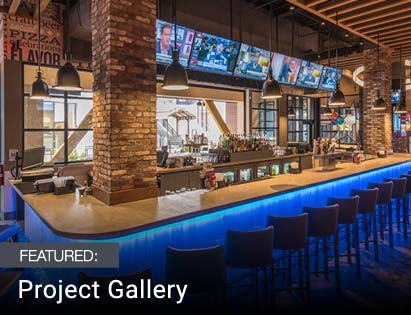Resources
The Future of Lighting: An Informational Guide to LED Technology.

Technology Overview
LED (Light Emitting Diode) is the next generation of lighting technology and design, rapidly becoming the preferred lighting solution of both professionals and consumers. An LED "bulb" is a small solid state lighting device comprised of a tiny semiconductor diode encapsulated in an epoxy resin enclosure that glows when voltage is applied to it. This unique method of generating light output provides LEDs with a variety of advantages including energy-efficiency, longevity, durability and safety.Efficiency
In today's power-hungry world, "energy efficiency" is becoming an increasingly important term as we strive to find new ways to lower our overall consumption of power. New technologies are being developed to increase our efficiency. No doubt, you've heard of the new technologies in the automotive industry that are helping lead it into a cleaner future such as the hybrid car, E85 gasoline, and the hydrogen fuel cell vehicle. The lighting industry is also experiencing similar design and technological breakthroughs which will guide it into a more-efficient, less power-hungry future. One of the key technologies breaking through is the use of LEDs. Consuming up to 90% less power than your standard incandescent light bulb, LEDs are an extremely energy efficient technology. Lower power consumption means lower energy bills. Simple as that. So not only are LEDs eco-friendly, they can be wallet-friendly too.Here's a real-world example for you on the efficiency of LED: our 2-Wire LED rope lights use 0.8 watts per linear foot of rope light. Compare that to a standard rope light which will use approximately 5-6 watts per linear foot. Now factor in the overall length of the rope light and how long it will stay on every day and it quickly becomes apparent how fast the energy saving features of LED technology can add up, both on your energy meter and your checkbook.
- LED Rope Light: 0.8 watts/ft * 150 ft run = 120 watts
- Incandescent Rope Light: 6 watts/ft * 150 ft run = 900 watts
- Versus LED, the incandescent rope light consumes over 7X as much energy!
Longevity
The typical life span of an LED is 100,000 hours, compared to a typical incandescent bulb which has a life span of approximately 1,000-1,500 hours. The long life span of LEDs can dramatically reduce maintenance and long-term operating costs. Here is a breakdown of potential LED life spans:- 100,000 hours powered for 24 hours/day = 11.5 years
- 100,000 hours powered for 8 hours/day = 34 years
- 100,000 hours powered for 4 hours/day = 68.5 years
Durability
Thanks to its electrical semiconductor and solid epoxy resin construction, LEDs do not contain fragile components like those found in incandescent or fluorescent bulbs such as glass, filaments or gases that are easily broken or disrupted. This makes LED a remarkably durable and rugged technology capable of withstanding shock, vibration and even extreme temperatures.Safety
As the electrical semiconductor in an LED emits light, it will generate virtually no heat output and is cool to the touch. Leaving it on for an extended period of time can also be done without incident or worry. This is very different from incandescent light bulbs, where it is the heating of the filament that generates light. In fact, of all the energy incandescent bulbs consume, 95% of it is wasted on heat output. This why they are very hot to the touch and can become possible fire hazards.Applications
An LED produces a focused light, making it ideal for specific scenarios such as desk lamps, spot lights, flashlights, signage lighting and other types of task-specific and/or energy-conscious lighting scenarios. LED lighting can be used in all kinds of different applications and environments within a variety of industries:- Commercial Lighting
- Retail Lighting
- Residential Lighting
- Architectural Accent Lighting
- Entertainment and Gaming
- Aerospace
- Automotive
- Electronic Instrumentation
- Military
- Traffic and Transportation
- and many others
 Cart
Cart









